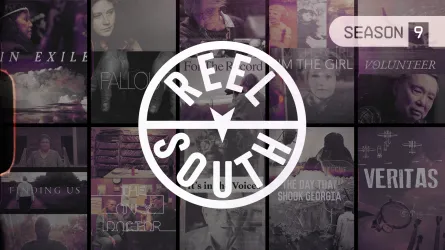About two years ago, the San Francisco-based Center for Asian American Media (CAAM) realized there was a key demographic absent in much of CAAM’s work promoting the Asian-American experience and influencing both the public media and documentary film industries. Executive Director Stephen Gong asked of the organization: What is the context of Asian-American filmmakers in the South?
After some research, a Ford Foundation grant, and a strategy to connect to Asian American storytellers beyond the two coasts, CAAM finds itself more immersed in the South than ever, including as a partner and contributor to the PBS documentary strand REEL SOUTH.
CAAM’s no stranger to the region, having funded notable films such as A Village Called Versailles, about the Vietnamese refugee community in New Orleans East, and Relocation Arkansas, about Japanese internment camps in southeastern Arkansas. Part of this pivot to the South was their desire to organize a convening of Asian American makers in the South with industry stakeholders, including prominent film festivals, funders, foundations and Reel South’s own public media station home, UNC-TV Public Media North Carolina.
“The reason we embarked on this project is we noticed we didn’t have connections to makers in the South, but we knew some of the histories of Asian Americans there,” Gong said, “these films were the armatures. But it was a big leap to find a partner.”
“From the beginning, we were careful that we partner with communities that were local. Every community is different, and we understood going in that we had to be very careful to find the right partner—to listen and learn. We were based in San Francisco trying to organize a convening with a community we didn’t know,” said Sapana Sakya, CAAM’s Talent Development & Special Projects Manager. Despite CAAM's new presence in the South, in a February 2018, one-day convening titled “Beyond Borders: Diverse Voices of the American South” (held at UNC-TV in Durham, North Carolina), CAAM introduced Reel South and many other organizations to the diverse and ambitious makers around the region. In fact, a future Season 4 filmmaker, Wake Forest University graduate student Hao Zhang (Gimme a Faith), would attend and lay the groundwork for his film's future broadcast. Fruits were borne and truths told, including an impassioned welcome from neighboring UNC Chapel Hill professor and scholar Jennifer Ho.
Sakya has since played an integral role connecting with Asian Americans in the region, often spotted at festivals and participating in the affinity networking group A-DOC. Her knowledge of the fastest growing demographic in the South has expanded beyond the “boat people” coming to the Gulf Coast as seen in Versailles. “Now we’re talking about their children and those children and the lived experiences of those people in the South. We see so many mixed-race families happening so much faster than they used to. It shows the narratives, the complicating narratives.”
Reel South (UNC-TV) and CAAM continue to complicate the narratives of the documentary ecosystem in the South. With CAAM joining Reel South Season 4 on its journey to explore the diverse histories and voices of the region, the series has been able to expand its financial sustainability and support Asian American filmmakers and filmmakers of color on the series. Notably this May, the series premieres the documentary Gimme a Faith, directed by Hao Zhang as he documents his fellow Chinese international students’ introductions to the Christian faith. In four seasons of stellar southern storytelling, this film is a standout for reasons that speak to personal exploration, cultural representation, and shifting filmmaking ethos. Zhang has created a film of American magnitude and of community that could be told best only through his lens.
Zhang’s exploration of isolation is an important theme for this film and a timely one. In May, the public media world turns its attention to Asian American and Pacific Islander heritage month and the stories of this demographic's legacy on the country and the industry. “When we are talking about disparities, the other identities have a claim. But we felt like the Asian-American perspective helps us all look at American issues and problems in a new way,” said Gong. CAAM’s discoveries resonate as many Asian American creatives attest to feeling isolated in and around the South.
“Lots of creatives thought they were one of few. But the truth is that the demographics say there are more of us than is known,” said Sakya. “The point is when the numbers are demonstrating a narrative, it doesn’t seem true until you can experience it yourself. By centralizing diversity…we see that we [Asian Americans] are a reason things are so dynamic.”
CAAM’s annual film and culture festival is slated to start May 9th, complete with a creative campaign designed by North Carolina’s own Saleem Reshamwala. And the organization continues its role in expanding the reach of the Southern lived experience among Asian Americans. They’ve already awarded two southern films for their Social Change Fund and as Gong tells me, the National Minority Consortia, of which CAAM is a founding member, is evolving into its next iteration—the National Multicultural Alliance.
Category
Share


